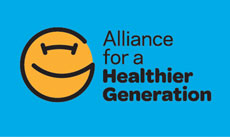 While all states have a SRTS coordinator, few, if any, have been at it as long as Pat Pieratte with the Florida Department of Transportation (FDOT). She just retired after 35 years with the department, serving six years as the SRTS coordinator. Before she left to go folk dancing in Croatia and Slovenia, there was a gathering to talk about her successes and wish her well.
While all states have a SRTS coordinator, few, if any, have been at it as long as Pat Pieratte with the Florida Department of Transportation (FDOT). She just retired after 35 years with the department, serving six years as the SRTS coordinator. Before she left to go folk dancing in Croatia and Slovenia, there was a gathering to talk about her successes and wish her well.
Resource Library
 Answering this is easy. The Safe Routes Partnership works to make changes to the built environment so that generations of children can bicycle and walk to school. Not only is it a great way to improve children’s lives, but it reminds adults about the simple joys of walking and bicycling with their family, friends and neighbors.
Answering this is easy. The Safe Routes Partnership works to make changes to the built environment so that generations of children can bicycle and walk to school. Not only is it a great way to improve children’s lives, but it reminds adults about the simple joys of walking and bicycling with their family, friends and neighbors.

The answer is a resounding NO!
IT’S ALIVE!
 By now, you’ve likely heard that the new transportation bill, MAP-21, consolidated bicycling and walking programs into a new program called Transportation Alternatives, and that overall funding was cut by approximately 30 percent. However, the details vary quite a bit state by state.
By now, you’ve likely heard that the new transportation bill, MAP-21, consolidated bicycling and walking programs into a new program called Transportation Alternatives, and that overall funding was cut by approximately 30 percent. However, the details vary quite a bit state by state.
 “I always loved running...it was something you could do by yourself, and under your own power. You could go in any direction, fast or slow as you wanted, fighting the wind if you felt like it, seeking out new sights just on the strength of your feet and the courage of your lungs."
“I always loved running...it was something you could do by yourself, and under your own power. You could go in any direction, fast or slow as you wanted, fighting the wind if you felt like it, seeking out new sights just on the strength of your feet and the courage of your lungs."
- Jesse Owens
The Washington State Safe Routes to School program has strong state support. In 2005, the state legislature made a 16 year commitment towards the safety of children walking and bicycling to school. Since that time there have been: four complete funding cycles; $31 million awarded – about $21 million in federal funds and $10 million in state funds; a 21 percent increase in children walking and bicycling to school; Washington State Safe Routes to School was codified into state law RCW 47.04.300 in 2009; and 95 projects – 39 complete and 56 underway.
In 2012, the MAP-21 transportation legislation made changes to the Federal Safe Routes to School program that added a required state or local match of up to 20 percent of project costs.
 On the heels of our Greater Washington, DC area regional Complete Streets policy, the National Complete Streets Coalition (NCSC) released their
On the heels of our Greater Washington, DC area regional Complete Streets policy, the National Complete Streets Coalition (NCSC) released their
This webinar from December 9, 2014 explores the process used to create Complete Streets in a variety of southern settings.
 During the opening plenary session at ProWalk/ProBike in Long Beach, Suja Lowenthal, PhD, a council member from Long Beach, addressed the attendees. She’s a passionate advocate, sharing many ideals so many of us do, but I strongly agreed when she declared that our communities are not bike-friendly until mothers with children feel comfortable taking to the streets. That is such an imp
During the opening plenary session at ProWalk/ProBike in Long Beach, Suja Lowenthal, PhD, a council member from Long Beach, addressed the attendees. She’s a passionate advocate, sharing many ideals so many of us do, but I strongly agreed when she declared that our communities are not bike-friendly until mothers with children feel comfortable taking to the streets. That is such an imp
 October is such a great time of year.Everywhere I look lately, no matter what city or town I am visiting, I see more children and families walking and bicycling to school, the park, other destinations and just for fun.
October is such a great time of year.Everywhere I look lately, no matter what city or town I am visiting, I see more children and families walking and bicycling to school, the park, other destinations and just for fun.
 The Alliance for a Healthier Generation, founded by the American Heart Association and the William J. Clinton Foundation, was formed in 2005 as a response to the dramatic increase in prevalence of childhood obesity across the nation.
The Alliance for a Healthier Generation, founded by the American Heart Association and the William J. Clinton Foundation, was formed in 2005 as a response to the dramatic increase in prevalence of childhood obesity across the nation.
 The Transportation Improvement Program (TIP) is a region’s approved list of specific transportation projects mandated by federal law. It serves as a multi-year financial schedule for obligating federal funds to state and local transportation projects. The TIP contains funding information for all modes of transportation including bicycle and pedestrian projects.
The Transportation Improvement Program (TIP) is a region’s approved list of specific transportation projects mandated by federal law. It serves as a multi-year financial schedule for obligating federal funds to state and local transportation projects. The TIP contains funding information for all modes of transportation including bicycle and pedestrian projects.
 I recently had the privilege of speaking at the Fairfax County Bike Summit. It was the first Bike Summit in the county. Fairfax County has come a long way through the work of the Fairfax Advocates for Better Bicycling.
I recently had the privilege of speaking at the Fairfax County Bike Summit. It was the first Bike Summit in the county. Fairfax County has come a long way through the work of the Fairfax Advocates for Better Bicycling.
Florida has had great success with Safe Routes to School under SAFETEA-LU, with more than 235 applications ($68.8 million) being funded. The average Safe Routes to School project funded was $292,766. There has been a call for infrastructure applications each fall through spring. Spring 2012 ended the 6th call for projects. These projects will be in the 2017 work program. The average return on these projects was an increase of 22 percent of children walking to and from school. The program works!
 There are a number of exciting Safe Routes to Schools initiatives taking place around the state of Mississippi and the momentum continues. The Mississippi Department of Transportation’s Safe Routes to School program has opened up its fourth funding cycle.
There are a number of exciting Safe Routes to Schools initiatives taking place around the state of Mississippi and the momentum continues. The Mississippi Department of Transportation’s Safe Routes to School program has opened up its fourth funding cycle.
The School Site Audit will help determine walking and bicycling conditions on or adjacent to school property. Similar to the School Site Audit, the Neighborhood Site Audit is designed to help you evaluate the walking and bicyclingconditions by inventorying neighborhood intersections, streets, and sidewalks used by the students.
This report describes how student school travel in the U.S. changed from 1969through 2009 using information from the 2001 and 2009 National HouseholdTravel Survey (NHTS) and the 1969 and 1995 Nationwide Personal TransportationSurveys (NPTS).
 The Wake County Child Safety Action Network (WakePedNet)is a varied group of individuals who share a similar goal: to raise awareness of child pedestrian injury concerns in Wake County, North Carolina to share and plan activities, and to build greater capacity to prevent pedestrian crashes and injuries.
The Wake County Child Safety Action Network (WakePedNet)is a varied group of individuals who share a similar goal: to raise awareness of child pedestrian injury concerns in Wake County, North Carolina to share and plan activities, and to build greater capacity to prevent pedestrian crashes and injuries.


